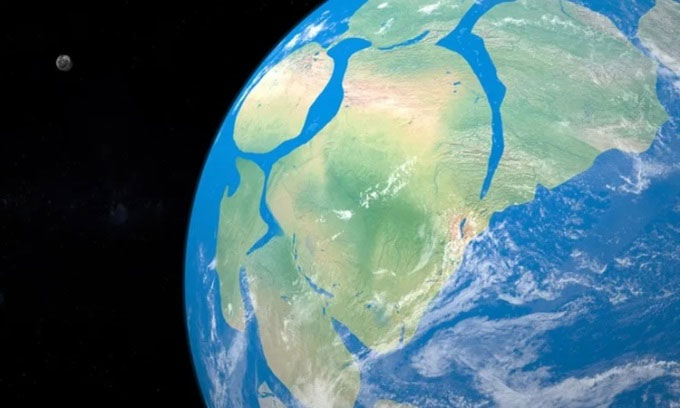Supercontinent causes Earth's mantle to split in two
The Earth's mantle was split into two regions, the African region and the Pacific region, when the supercontinent Pangaea broke apart.
The Earth's mantle is divided by the Pacific Ring of Fire , an ancient structure that reflects the formation and destruction of the supercontinent Pangaea. One side contains most of the Earth's land. Called the African domain, this region extends from the eastern coasts of Asia and Australia to Europe, Africa, and the Atlantic Ocean off the western coast of North America. The other side is the Pacific domain , which includes the ocean of the same name. Beneath the African domain, the mantle contains a much greater diversity of elements and their isotopes than the Pacific domain, according to Live Science .

The Earth was once covered by a single supercontinent called Pangaea. (Photo: How Stuff Works).
That mirrors the last two supercontinent cycles over the past billion years, according to study co-author Luc Doucet, a PhD student in Earth and planetary sciences at Curtin University in the UK. During that time, there were two supercontinents, the first being Rodinia (which formed about 1.2 billion years ago and broke up 750 million years ago), and Pangaea (which formed about 335 million years ago and broke up 200 million years ago). 'What we're seeing now is essentially what happened during the transition from Rodinia to Pangaea and then Pangaea, breaking up ,' Doucet said.
These supercontinents came together in Africa. As the ocean closed between them, oceanic crust slid under the continent in a process called subduction , sometimes dragging continental rock down with it. This transported elements and isotopes from the continental crust to the mantle beneath the growing supercontinent, Doucet explains. That geological conveyor belt continued in a slightly different form after the supercontinent formed. Oceanic crust at the margins of Rodinia and later Pangaea sank under the continental crust, eroding some of the continental rock. The process created a funnel effect.
Even after Pangaea broke up, its traces remained in the shallow and deep mantle, according to research published in the journal Nature Geoscience. Doucet and Zheng-Xiang Li, an honorary professor at Curtin University, focused on magma from the shallow mantle in the new study. They examined 3,983 samples from mid-ocean ridges, where tectonic plates move apart and magma from the shallow mantle rises and hardens into volcanic rock or basalt.
The team then used machine learning to compare the elemental and isotopic compositions of basalt samples from around the world and from the same time period. Similar to magmas from the deep mantle, they found that the shallow mantle is divided into African and Pacific domains. The findings reveal more about the processes that bind the mantle to the ground.
- Earth 'shudder', signaling the birth of a supercontinent?
- Pangea Ultima: Earth's future supercontinent
- The mysteries of the ancient supercontinent of the Earth
- Mantle's Middle Class - Mantle
- Do people with brains split apart, are their souls divided into two different halves?
- How did supercontinents form and disintegrate?
- Russia, North America and Japan can merge into supercontinent
- America and Asia will form supercontinent in the future
- The sunken island in Australia is the result of the change of the supercontinent Gondwana
- Found the missing piece of ancient continent
- Discover new dinosaurs in extremely rare places
- How do the continents of the Earth form?
 'Fine laughs' - Scary and painful torture in ancient times
'Fine laughs' - Scary and painful torture in ancient times The sequence of numbers 142857 of the Egyptian pyramids is known as the strangest number in the world - Why?
The sequence of numbers 142857 of the Egyptian pyramids is known as the strangest number in the world - Why? History of the iron
History of the iron What is alum?
What is alum?